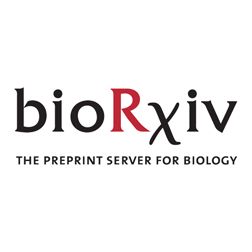Stats on #bodybrain #neuroskyence data can become non-trivial pretty quickly: Anything beyond t-tests on 'systole vs diastole' or 'insp vs exp' will include some form of phase binning, so we need adequate surrogates for robust permutation stats. Plus, these are not available for circular data.
09.10.2025 08:03 — 👍 4 🔁 3 💬 1 📌 0
Portail Emploi CNRS - Offre d'emploi - Post-doctorate - Beta bursts & laminar MEG (M/F)
🚨Postdoc job offer🚨
Are you interested in beta bursts? Want to help drive methods for laminar inference with MEG? Now hiring a postdoc: run head-cast MEG experiments, help build our laMEG toolbox, and collaborate across Lyon–Marseille–Strasbourg. emploi.cnrs.fr/Offres/CDD/U...
Please repost! 🧠📈
18.09.2025 06:58 — 👍 17 🔁 9 💬 1 📌 0
New preprint from the lab! 🧠
Led by Juliana Trach, w/ Sophia Ou
Using fMRI, we discovered evidence for time-sensitive reward prediction errors (RPEs) in the human cerebellum.
Builds on, and extends, recent work in both rodents and NHPs
08.09.2025 14:31 — 👍 45 🔁 20 💬 2 📌 0
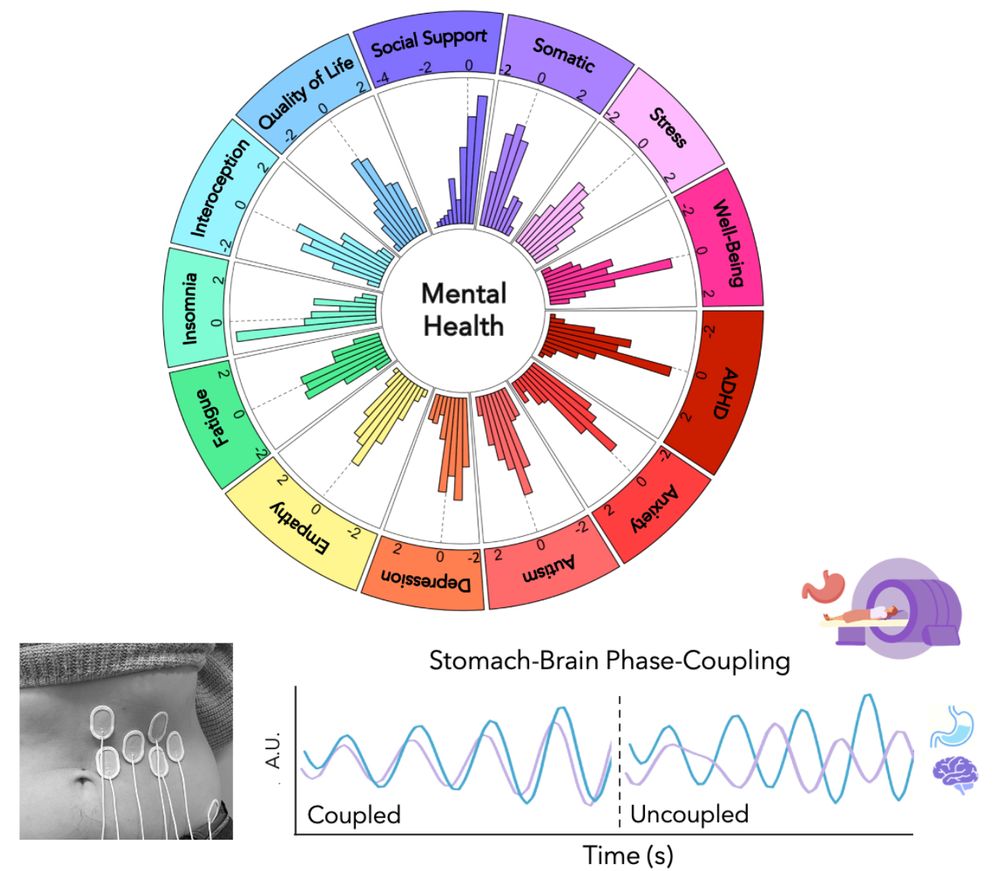
Got Butterflies in your Stomach? I am super excited to share the first major study of my postdoc @the-ecg.bsky.social - Now out in @natmentalhealth.nature.com! We report a multidimensional mental health signature of stomach-brain coupling in the largest sample to date www.nature.com/articles/s44...
30.07.2025 09:49 — 👍 99 🔁 37 💬 7 📌 4
A major KI initiative to recruit new assistant professors with outstanding proposals in all areas of medicine, biomedicine and public health. We offer an amazing research environment, great colleagues and generous startup packages. Check it out and get working on your applications! (repost please!)
25.06.2025 10:08 — 👍 115 🔁 109 💬 2 📌 3
Preprint time :)
In this one, led by @asanchezcorzo.bsky.social, we describe respiratory coupling to excitability states across the wake-sleep cycle. If only we could always have hours and hours of data... Great first collab with the lab of @tschreiner.bsky.social at LMU! #Neuroskyence 🧠🟦
09.06.2025 16:26 — 👍 20 🔁 6 💬 0 📌 0

Call - Centre de Recerca Matemàtica
🚨 Two PhD positions open in Barcelona!
Work with Diego Vidaurre on machine learning at the intersection of methods, neuroscience, and clinical applications.
Details:
🔗 www.crm.cat/call/89/phd-...
🔗 www.crm.cat/call/88/phd-...
#neuroskyence #psychscisky
27.05.2025 09:34 — 👍 35 🔁 34 💬 2 📌 1
Somatosensory timing and cerebellar-basal ganglia beta-band interactions in Parkinson's disease https://www.biorxiv.org/content/10.1101/2025.05.15.653735v1
15.05.2025 11:15 — 👍 2 🔁 3 💬 0 📌 0
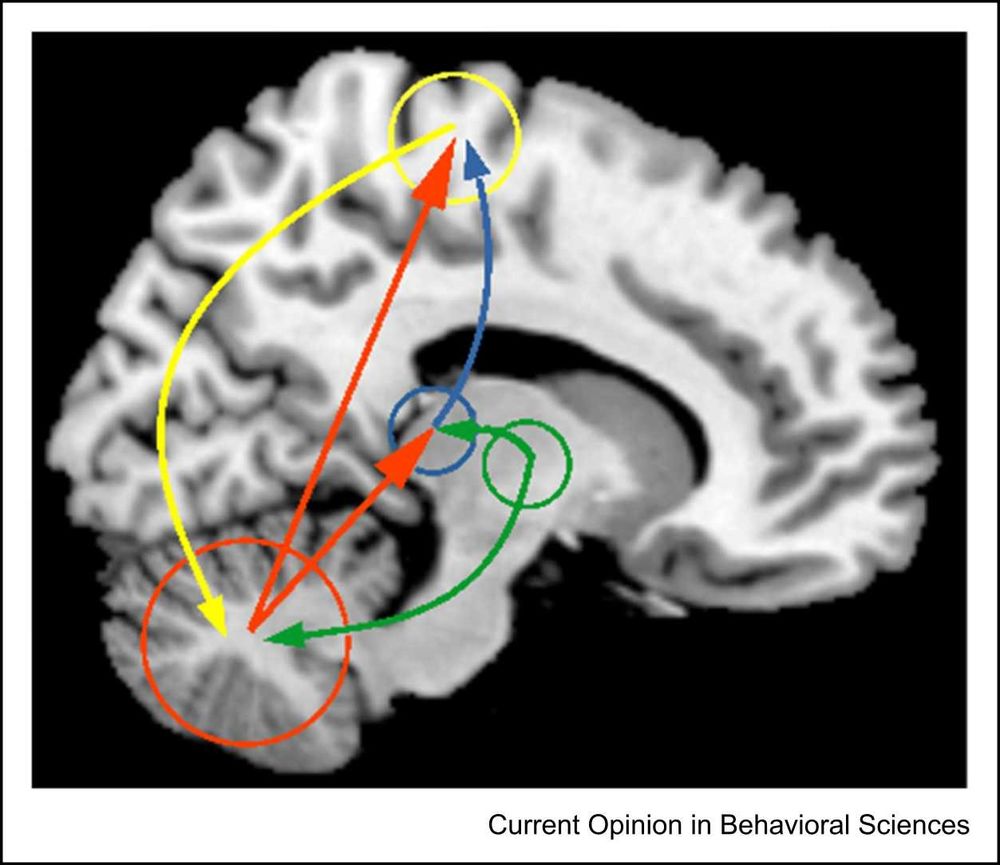
In conclusion, investigating PD-participants can reveal both underlying facts of our timing and action networks, while also shedding light on the disease itself.
19.05.2025 08:47 — 👍 0 🔁 0 💬 0 📌 0
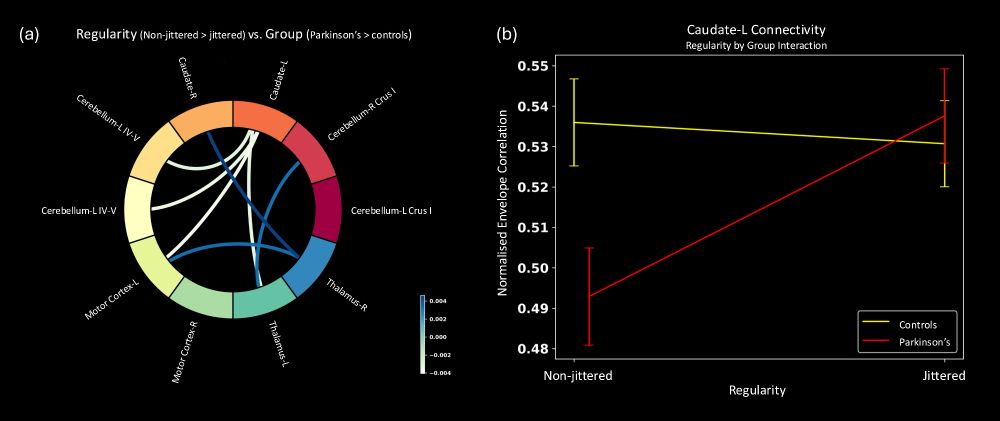
As an exploratory endeavour, we investigated the cerebello-thalamo-ganglion network we, proposed in bit.ly/42Yh4NE, and found that PD-patients showed altered activity for the jittered condition.
19.05.2025 08:47 — 👍 0 🔁 0 💬 1 📌 0
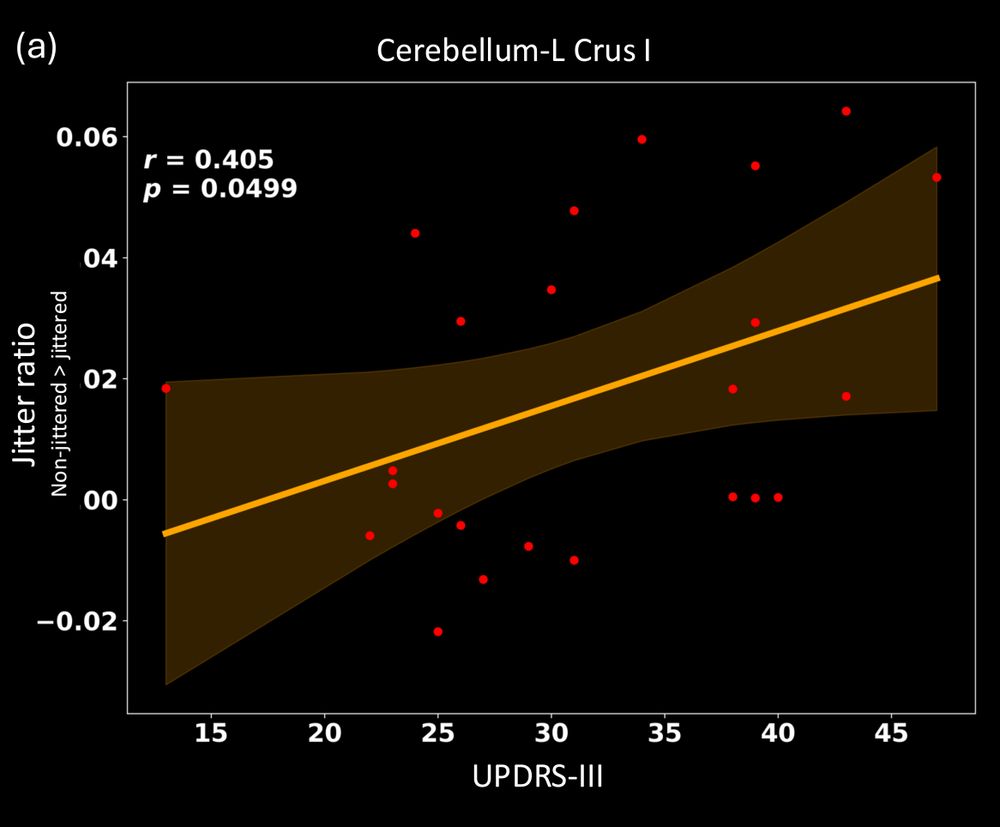
The differences in the cerebellum correlated with PD-symptoms as measured by UPDRS.
19.05.2025 08:47 — 👍 0 🔁 0 💬 1 📌 0
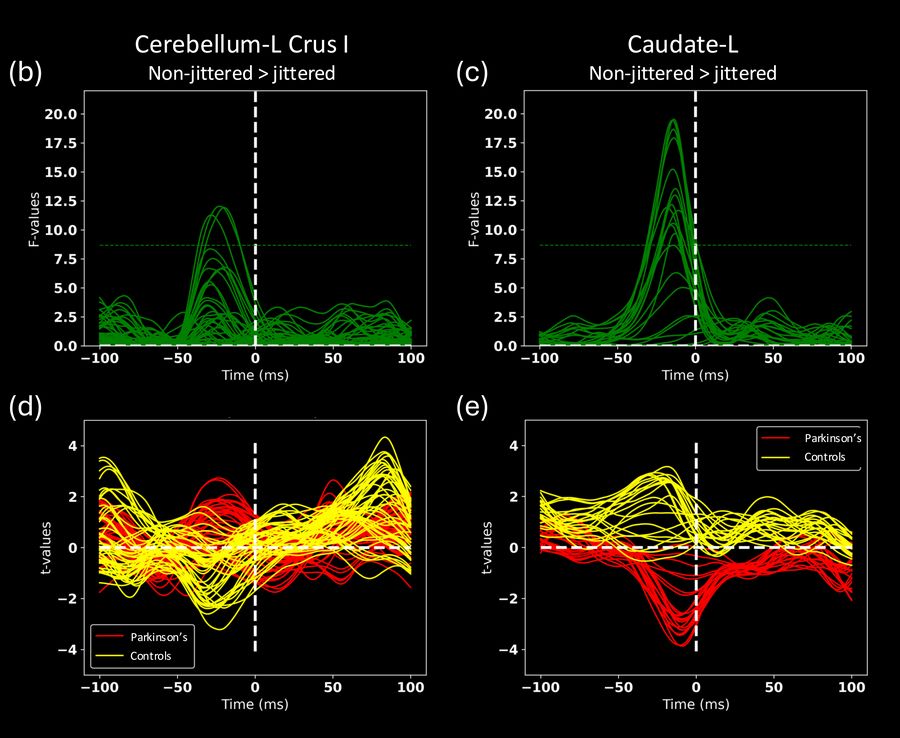
Before the onset of the expected, but omitted stimulation, we found differences in the beta band (14-30 Hz) between groups in the cerebellum and the caudate nucleus.
19.05.2025 08:47 — 👍 0 🔁 0 💬 1 📌 0

We had PD-participants and controls participate in a passive paradigm. Jittered and non-jittered trains of stimulation were followed by omissions.
19.05.2025 08:47 — 👍 1 🔁 0 💬 1 📌 0

Somatosensory timing and cerebellar-basal ganglia beta-band interactions in Parkinson’s disease
Parkinson’s disease has traditionally been viewed through the lens of basal ganglia dysfunction, yet emerging research also implicates the cerebellum and its connections to the basal ganglia.
To prob...
Parkinson’s disease is all about basal ganglia, right?
Using MEG in a timing paradigm, we find altered PD-activity in the cerebellum as well. This is important for understanding timing and action networks in the brain and sheds light on PD. @pandonaude.bsky.social 🧠📈
Preprint: bit.ly/431EEcv
19.05.2025 08:47 — 👍 8 🔁 5 💬 1 📌 1

The differences in the cerebellum correlated with PD-symptoms as measured by UPDRS
19.05.2025 08:43 — 👍 0 🔁 0 💬 0 📌 0

Before the onset of the expected, but omitted stimulation, we found differences in the beta band (14-30 Hz) between groups in the cerebellum and the caudate nucleus
19.05.2025 08:43 — 👍 0 🔁 0 💬 1 📌 0

We had PD-participants and controls participate in a passive paradigm. Jittered and non-jittered trains of stimulation were followed by omissions.
19.05.2025 08:43 — 👍 0 🔁 0 💬 1 📌 0
I’m looking for a postdoc and RA for an ERC-funded project “SLEEPAWAY: Forgetting unwanted memories in sleep”. You’ll use MEG/EEG and fMRI to understand how the sleeping brain remembers and forgets. PLEASE REPOST 😊
Postdoc: tinyurl.com/vr5thp7s
RA: tinyurl.com/ycyzkatc
13.05.2025 11:21 — 👍 47 🔁 69 💬 0 📌 1
Sådan styrer din reptilhjerne dig! - Fuld af viden - Forskernes fredagsbar
🧠 Det er reptilhjernen, der får dig til at jagte sex, mad og vold…troede du måske?
Faktisk er myten om krybdyrhjernen punkteret. Hør hvorfor i podcasten ’Forskernes fredagsbar’ med lektor i kognitionsvidenskab Lau Møller Andersen. - www.spreaker.com/episode/sada...
03.04.2025 08:14 — 👍 1 🔁 1 💬 0 📌 0
Could you expand on what those other things are?
I am curious because, in humans, we are finding out that the cerebellum is basically involved in most cognition as well.
And I am eager to learn what might be going on in other species.
Thanks
02.04.2025 08:15 — 👍 0 🔁 0 💬 0 📌 0
Sådan styrer din reptilhjerne dig!
Vores reptilhjerne jagter sex, mad og vold... Eller gør den?
For selvom du måske har hørt om krybdyrshjernen, så er den stort set en myte. I hvert fald er
The cerebellum is part of the reptile brain, right?
Listen to me debunk this myth that's alive and kicking outside the neuroscience circles in this popular science podcast (in #Danish)
www.spreaker.com/episode/sada...
#neuroskyence
27.03.2025 09:32 — 👍 12 🔁 3 💬 0 📌 0
Coming back to my job call, this is exactly what I set out to test using a combination of deep brain stimulation and magnetoencephalography. 🧠📈
international.au.dk/about/profil...
07.03.2025 09:39 — 👍 2 🔁 0 💬 0 📌 0

This fits with our second paper, short review where we forward the hypothesis that the cerebellum is not a time-keeper per se, but an integrator of spatial and temporal information that can inform predictions about future sensory events, and allowing for informed behaviour bit.ly/4bcQd31. 🧠📈
07.03.2025 09:39 — 👍 7 🔁 0 💬 1 📌 0
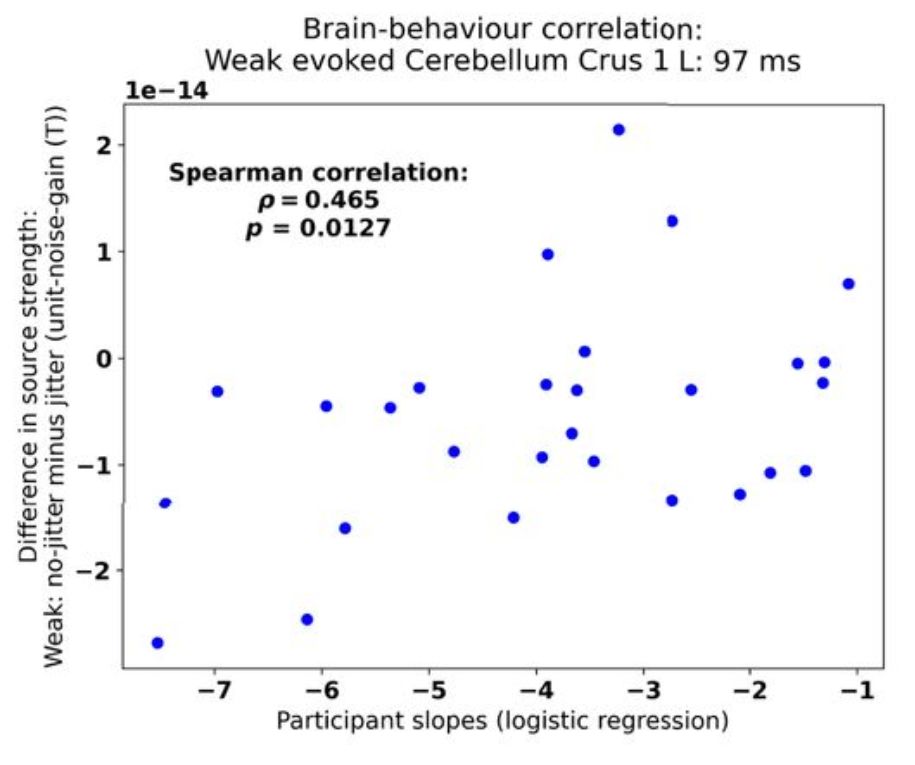
Thus, we find a cerebellum-behaviour correlation that we interpret as: the more surprising the stimulus is to the cerebellum, the less likely one is to detect it. We also find evidence of connectivity between cerebellum and thalamus which we interpret as the cerebellum informing one’s action plans🧠📈
07.03.2025 09:39 — 👍 0 🔁 0 💬 1 📌 0

n Detection of ..., we (
@sarangnemo.bsky.social
) find cerebellar evoked responses to threshold-level stimuli. We find that accuracy in detection correlates with the magnitude of the cerebellar response, which is in turn dependent on the temporal regularity of preceding stimuli bit.ly/3D2AlTR 🧠📈
07.03.2025 09:39 — 👍 1 🔁 0 💬 1 📌 0
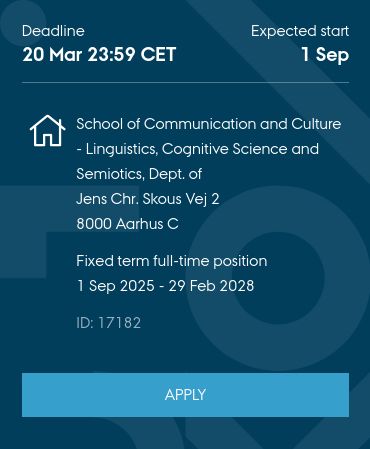
(NOW with) 🧠📈
Background: when going off X/Twitter, I got out of habit of promoting my articles online. I’d like to highlight two articles on the cerebellum that I published in 2024, which also provides some context to my current call. I’m excited about revealing a cerebellum-behavioural correlation
07.03.2025 09:39 — 👍 10 🔁 2 💬 2 📌 0
Coming back to my job call, this is exactly what I set out to test using a combination of deep brain stimulation and magnetoencephalography. 🧠
international.au.dk/about/profil...
05.03.2025 16:34 — 👍 0 🔁 0 💬 0 📌 0

This fits with our second paper, short review where we forward the hypothesis that the cerebellum is not a time-keeper per se, but an integrator of spatial and temporal information that can inform predictions about future sensory events, and allowing for informed behaviour bit.ly/4bcQd31. 🧠
05.03.2025 16:34 — 👍 2 🔁 0 💬 1 📌 0
Linguistics, Conversation Analysis/Interactional Linguistics, Forensic Linguistics, a bit of Phonetics & Prosody. Postdoc at University of Agder, Norway, originally from Denmark (he/him)
https://sorensandagersorensen.dk/
Empowering neuroscientists with fiber-based microscopic systems for imaging at any brain depth
CTO at DeepEn, @deepen-imaging.bsky.social
( https://deepen-imaging.com/ )
🏳️🌈 Postdoc at the Embodied Computation Group. Interested in brain-body interactions, interoception, consciousness, & mental health
Cognitive Neuroscience | M/EEG | Self-touch | Postdoc @ Karolinska
Prof. University of Haifa.
Connoisseur of Consciousness and its varieties
https://salomonlab.org/
I post mainly about Neuroscience, Machine Learning, Complex Systems, or Stats papers.
Working on neural learning /w @auksz.bsky.social CCNB/BCCN/Free University Berlin.
I also play bass in a pop punk band:
https://linktr.ee/goodviewsbadnews
Associate Prof at University of Amsterdam. Cognitive psychology/neuroscience. Consciousness, decision making, arousal states. PI in the consciousbrainlab.com
cognitive neuroscientist // action planning / action recognition / joint action // senior postdoc @CogNeuroUR, former postdoc @SineLab and @Stockholm_Uni and PhD @DondersInst
PI of the https://imaginerealitylab.org/ @uclbrainscience.bsky.social where we investigate the neural and computational mechanisms of mental imagery and reality monitoring. Activist about mental health and EDI in academia. She/her.
Psychologist and neuroscientist at UCL https://metacoglab.org
Author, Know Thyself (2021) https://metacoglab.org/book
Dad and assistant to the Diplomat
#MSCA postdoctoral researcher at LMU in Schreiner lab | Interested in sleep and memory
Cognitive neuroscientist, runs a sleep lab. Studying sleep, dreaming, memory and rest. Uses EEG, interested in open science, women in STEM. 🧠📈😴 Frustrated with the higher-education industrial complex. Luddite-adjacent. #AAUP. Views are my own.
Professor of Cognitive Neuroscience at the FIL, UCL, using human neuroimaging to study how our prior knowledge influences the way we perceive the world. https://www.fil.ion.ucl.ac.uk/team/visual-perception-team/
Cognitive neuroscientist investigating the role of brain oscillations.
http://www.neuosc.com
Researcher at Google and CIFAR Fellow, working on the intersection of machine learning and neuroscience in Montréal (academic affiliations: @mcgill.ca and @mila-quebec.bsky.social).
Neuroscientist | PI of AudioPred at @UniOslo-RITMO.bsky.social
Studying predictive processing & developing intracranial EEG methods
Personal page: https://bit.ly/aBlenkmann
#cognition #iEEG #SEEG #perception #attention #neuroscience #predictiveprocessing
Assistant Professor of Psychology at Carnegie Mellon University | Studying how we acquire, adapt, and retain skilled movements | Physical Intelligence Lab: www.tsaylab.com
Postdoc at DZNE Bonn | Computational Neuroscience | Data Science | Basal Ganglia | Border collies 🐶 🐶
Neuroscientist and Educator. Neuroimaging, electrophysiology, PTSD, TBI, epilepsy, AUD. My book, "OUT OF YOUR MIND: The Biggest Mysteries of the Human Brain available @ your local book store, or here: https://www.amazon.com/Out-Your-Mind-Biggest-Mysteries/
Computational cognition. Vision. Working memory.
